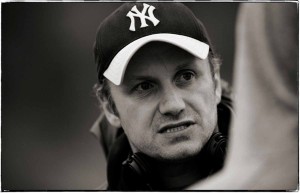
The seemingly effortless cinematography by Danny Cohen was the result of many tests with lenses. Abrahamson and Cohen worked at discovering what specifically worked best to serve their vision. “We just felt what our range of shot sizes and lens choices would be and we always stopped when it felt self-conscious. So we didn’t use super wide lenses. You might think that’s a good idea because you can get bigger shots in a small space but actually it just draws attention to itself. Also it just makes the room seem smaller because you can see more of the corners, while otherwise if you shoot on long lenses and you concentrate on details and close ups you can forget very quickly how small the place is,” Abrahamson said.
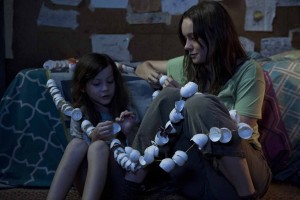
The director had worked with editor Nathan Nugent on several films already so they began this collaboration with an established process. The five month editing period with filled with patience and giving the film the time it needed to be fully formed. “We don’t try to solve the problems on the first day. We live with it. We play with it a bit,” Abrahamson explained. The intensive collaboration began during shooting. Nugent started cutting during this time so that by the end of the shoot they had something like an assembly, which was really long and had everything in it.
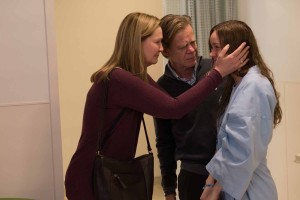 “So quite quickly, if that was three-and-a-half hours, we’ll get that down to two hours and 45 minutes. And then it’s a process of moving around the timeline. We don’t start at the beginning and go to the end. We move around. We tackle areas that we think are interesting. So we’ll work from those sequences and if one of those really work we go, ‘Okay this tells us something,’ and we look at the rest of the movie with that in mind.”
“So quite quickly, if that was three-and-a-half hours, we’ll get that down to two hours and 45 minutes. And then it’s a process of moving around the timeline. We don’t start at the beginning and go to the end. We move around. We tackle areas that we think are interesting. So we’ll work from those sequences and if one of those really work we go, ‘Okay this tells us something,’ and we look at the rest of the movie with that in mind.”
It is with this kind of slow creative process, that the film emerged. Abrahamson really embraced the process which he believes can’t be cheated. “You can’t jump to the end of it. You have to live with the stuff.”
Abrahamson’s collaboration with production designer Ethan Tobman began rather early on. He recalled a key moment when he, Cohen and Tobman went to Toronto before prep began to start playing with room dimensions and lenses. “I think all of us expected early on that we’d have to cheat a bit and shoot it in a bigger space so it would give us more room and allow us to make it feel smaller still but we could work more easily. But as soon as we built a bigger space, like 15 by 15 feet, it just lost the same intensity, it just didn’t feel like the same story,” he said.
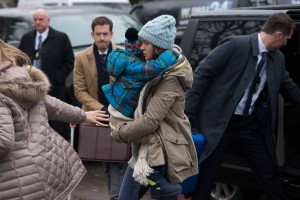 So they moved the walls closer and closer until it felt right. But then the questions became how to make filming work in such a small place. “We knew we could get the shots but we needed to find ways to get the lens right back to the walls when we needed it to be at the walls. We would never cheat. We never took the lens outside the actual dimensions of the wall but we wanted to get it back as far as we could,” he explained. Tobman came up with a Rubik’s cube like solution: to create a modular set where panels could be removed. Inside the walls are cork tiles that could be removed. This allowed them to sometimes poke the lens through the walls. The set was also built on a raised platform so floor panels could be removed to get the lens low to the floor. “But that was it really. There was nothing higher tech than that. We never took whole walls out.”
So they moved the walls closer and closer until it felt right. But then the questions became how to make filming work in such a small place. “We knew we could get the shots but we needed to find ways to get the lens right back to the walls when we needed it to be at the walls. We would never cheat. We never took the lens outside the actual dimensions of the wall but we wanted to get it back as far as we could,” he explained. Tobman came up with a Rubik’s cube like solution: to create a modular set where panels could be removed. Inside the walls are cork tiles that could be removed. This allowed them to sometimes poke the lens through the walls. The set was also built on a raised platform so floor panels could be removed to get the lens low to the floor. “But that was it really. There was nothing higher tech than that. We never took whole walls out.”
The costume design by Lea Carlson was carefully shaped by who the characters were, where they’d shop and what they could afford. Articles of clothing were also recycled. Items that Jack wore would become cleaning rags over time. In this way, the wardrobe became part of the set. The costume design also tracked the changes of the characters. Jack’s mother wore baggy clothing that hid everything. “She’s wearing these clothes that she feels comfortable in from initially when she’s a teenager, and Jack gradually moves from being dressed by his grandmother to being a more relaxed version of that towards the end of the movie when he is beginning to impose himself on how he looks,” Abrahamson said.
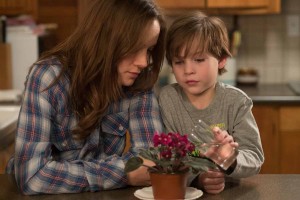 The biggest challenge in the film was to keep the audience engaged throughout the interesting structure, which is two halves separated by a very dramatic sequence which would traditionally be in the third act. “The escape would normally be the beginning of the end of the movie but we had a whole other story to tell afterwards. In the cinema, people are having such a visceral experience, if you let the tension go, then I think it’s really hard to get people back,” the director said. The answer to this dilemma was found in multiple little decisions in how Abrahamson shot the film, the use of music and how the film was cut. Ultimately he built the story of the two main characters in a way that makes the audience care so much about them that it creates deep interest in how they are going to end up, which he does not resolve until the end.
The biggest challenge in the film was to keep the audience engaged throughout the interesting structure, which is two halves separated by a very dramatic sequence which would traditionally be in the third act. “The escape would normally be the beginning of the end of the movie but we had a whole other story to tell afterwards. In the cinema, people are having such a visceral experience, if you let the tension go, then I think it’s really hard to get people back,” the director said. The answer to this dilemma was found in multiple little decisions in how Abrahamson shot the film, the use of music and how the film was cut. Ultimately he built the story of the two main characters in a way that makes the audience care so much about them that it creates deep interest in how they are going to end up, which he does not resolve until the end.
Another challenge arose out of the decision to shoot in sequence, which benefited
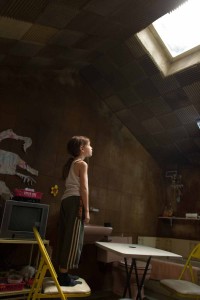 Tremblay as the character of Jack. “It allowed him to feel the story in a linear way, but that meant shooting the interiors first and the exterior after. So we shot in Canada going from autumn to winter so there were huge logistical challenges in that we were inside for the nice weather and outside for the freezing weather. But there was no way out of that,” Abrahamson said. There were benefits however to the story by this reality in that bringing the characters out into a barren, cold world was an unexpected surprise to the audience. “That going against expectations is something that I think gave the film some strength.”
Tremblay as the character of Jack. “It allowed him to feel the story in a linear way, but that meant shooting the interiors first and the exterior after. So we shot in Canada going from autumn to winter so there were huge logistical challenges in that we were inside for the nice weather and outside for the freezing weather. But there was no way out of that,” Abrahamson said. There were benefits however to the story by this reality in that bringing the characters out into a barren, cold world was an unexpected surprise to the audience. “That going against expectations is something that I think gave the film some strength.”
Making this film was filled with memorable experiences for the director and one of his favorites was shooting the dinner table scene. This was a tense scene, but it was so incredible for the director because he felt so joyful to be working with so many great actors. “I remember taking a moment just to acknowledge what a great privilege it was to be making a film that was so powerful, so complex with such great actors, such great crew and shooting a scene that was really interesting,” he said. Another aspect of the shoot that was particularly enjoyable was the comradery on set. He had worked with the heads of department but the crew were all local Canadians. His family was also in Toronto and would come to visit and everyone really thoroughly enjoyed each other and Abrahamson remembers the time fondly.





